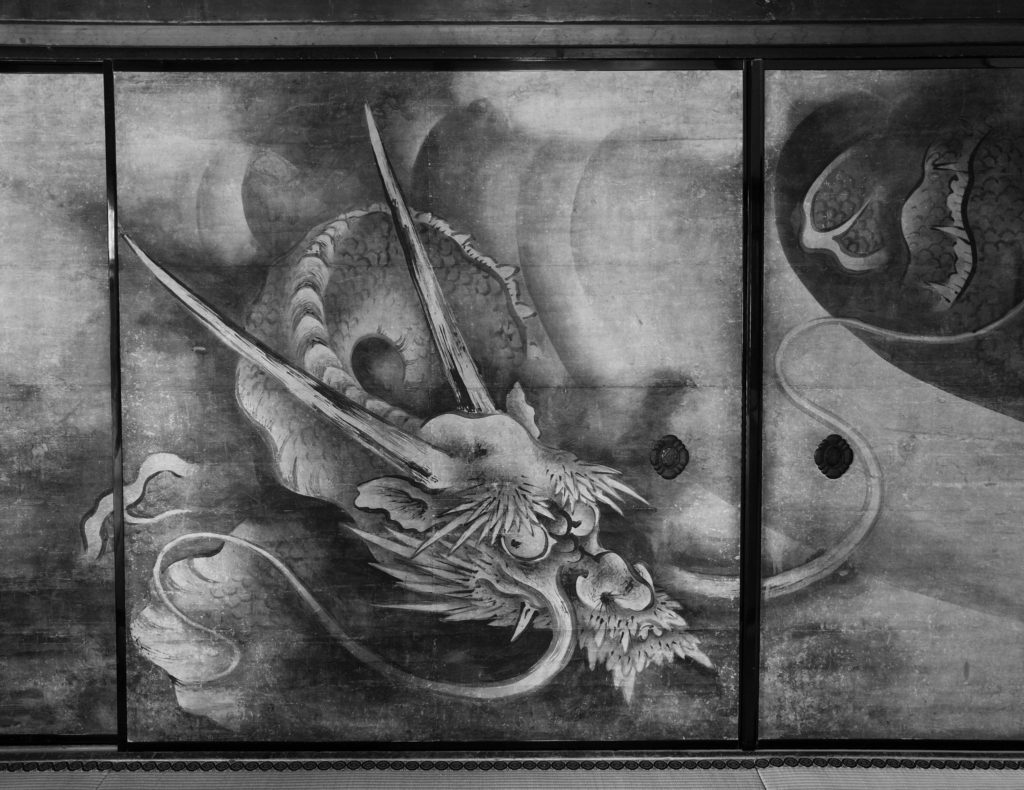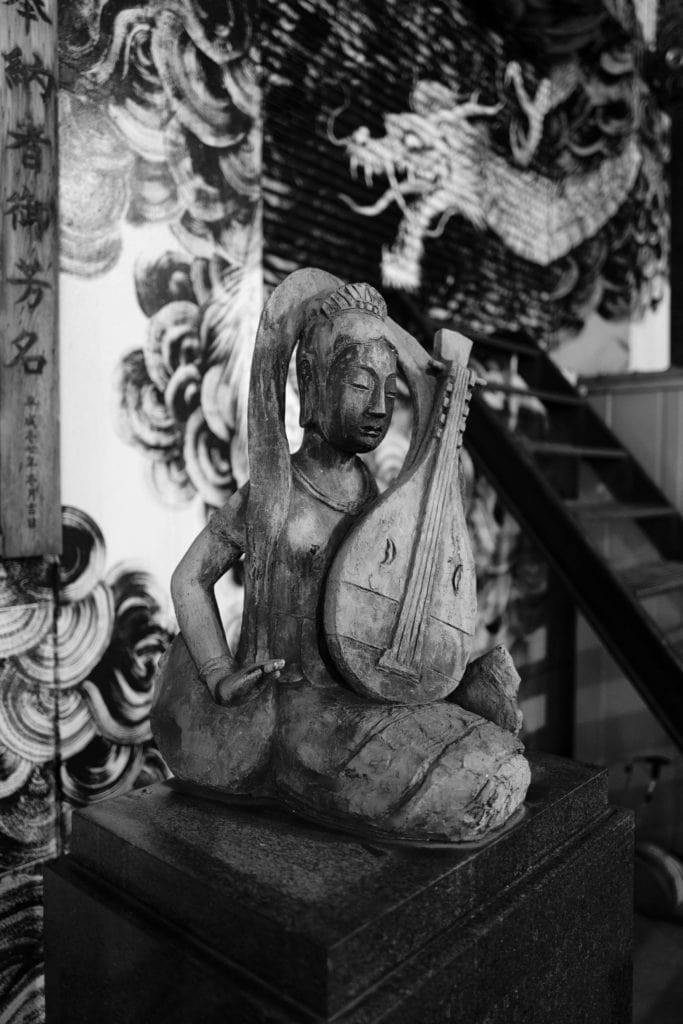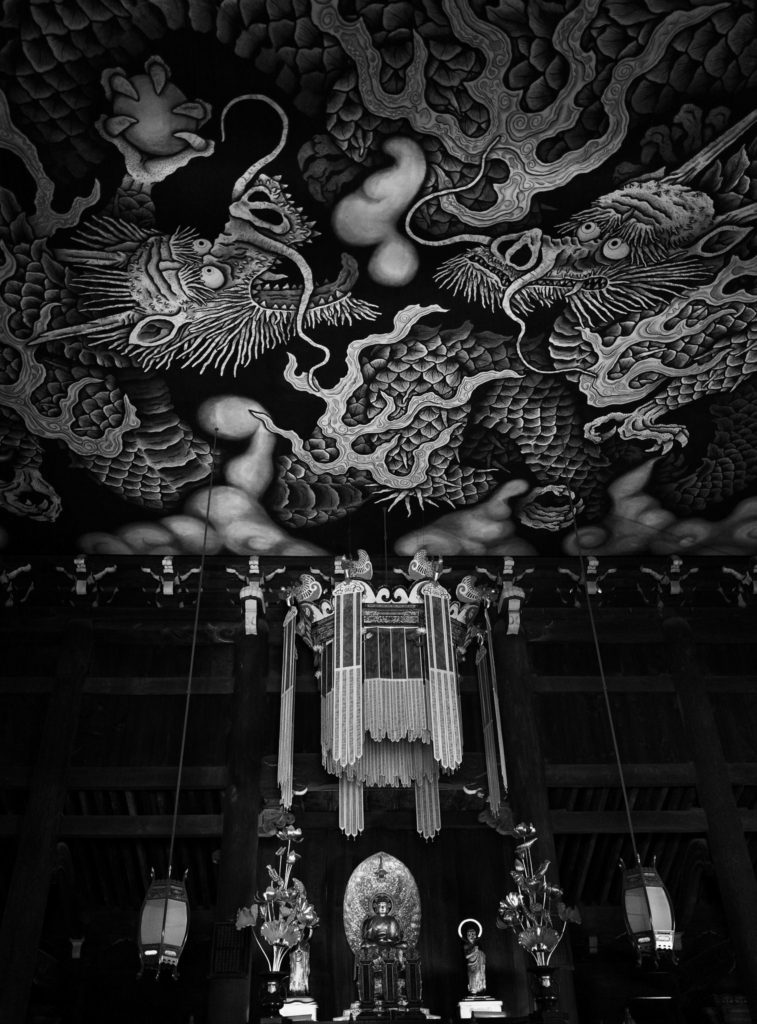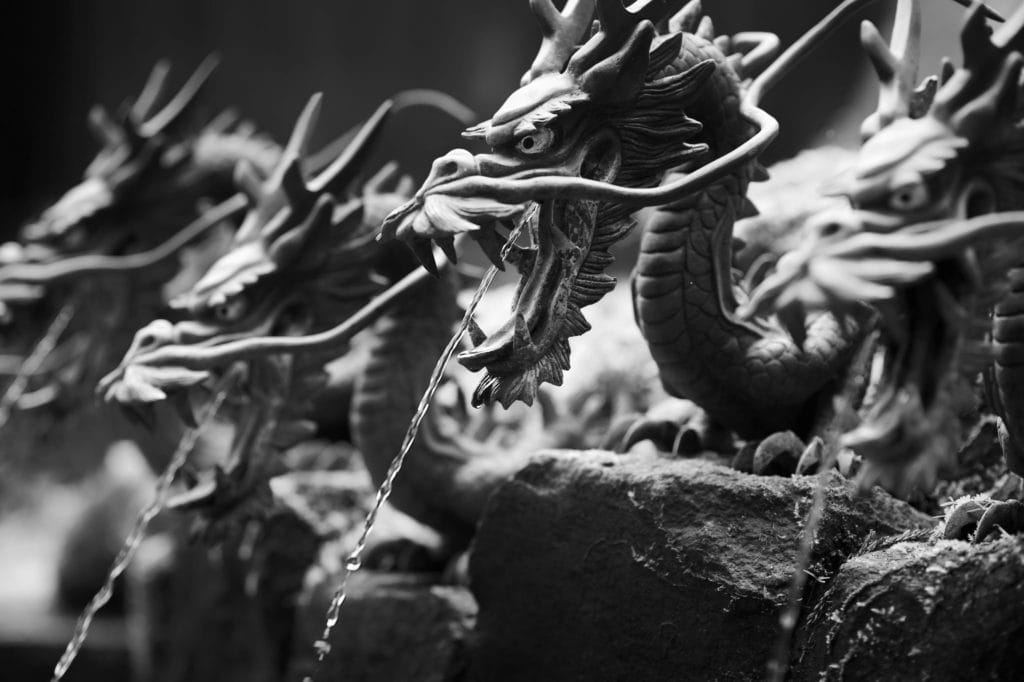The ryū – Japanese Dragon
“In Japan, the dragon is a good guy, not a bad guy.” This was the comment of our guide in Kyoto on a trip across Japan, where we had several memorable encounters with Japanese dragons.

Benevolent, auspicious, just, a bringer of good fortune and wealth, the Japanese dragon (Ryū), like its Chinese ancestor, is an ancient mythical creature that is very different from its malevolent, treasure-hoarding Western equivalent.
The Japanese dragon, (龍), holds a special place in Japanese culture, mythology, and symbolism. Its origins can be traced back to ancient Chinese influences, yet the Japanese dragon has evolved into a unique entity over the centuries.
The Origin of the Japanese Dragon
The concept of the dragon in Japan has its roots in Chinese mythology, where dragons were revered as powerful, celestial beings associated with rain, water, and the emperor’s authority. The adoption of Chinese cultural elements, including the dragon, occurred during Japan’s early interactions with the continent, notably through the spread of Buddhism and the importation of Chinese art and literature. This exchange laid the foundation for the integration of the dragon into Japanese folklore.
Symbolism and Cultural Significance
In Japanese culture, the dragon has been deeply embedded with symbolic meanings. Unlike Western dragons, often portrayed as malevolent creatures, the Japanese dragon is generally considered benevolent and is associated with auspicious qualities. The dragon is a symbol of strength, wisdom, and good fortune.
Japanese folklore and mythology are rich with dragon tales. One of the most famous is the legend of Yamata no Orochi, an eight-headed and eight-tailed dragon defeated by the storm god Susanoo, a myth found in the Kojiki (Record of Ancient Matters) and the Nihon Shoki (Chronicles of Japan), ancient Japanese historical texts.
The dragon’s association with water is evident in its role as a guardian of bodies of water, such as rivers and seas. Additionally, dragons are often linked to agricultural prosperity, as they are believed to bring rain and ensure bountiful harvests.
In Japanese art and iconography, the dragon is a common motif. It is frequently depicted in various forms, from traditional ink paintings to elaborate woodblock prints. The imagery of dragons can be found on clothing, ceramics, and architectural elements, symbolising protection and auspiciousness.
Appearance
Like many mythological creatures, it is a composite beast and has the head of a camel, the eyes of a hare, the antlers of a deer, the neck of a snake, the scales of a carp, the paws of a tiger and the claws of an eagle.
Encounters with Dragons

Our first dragon encounter was in Shinjuku, Tokyo, a name that refers to both one of the 23 city wards in the metropolis and more commonly to the large entertainment, business and shopping area around Shinjuku Station – the world’s busiest railway station. Painted on a wall behind a statue of a female deity playing a lyre lurked a fabulous white dragon on a black background surrounded by stylised swirls, it looked like some great, nameless tattoo artist had decided to take their artwork to a much grander scale. I was mesmerised and spent some time shooting the combination of the statue and the dragon mural with my Leica Q whilst my companions retired to a nearby bar.
A long history
The Asian dragon’s origin predates written history, but had achieved its present form of a long, scaled serpentine body, small horns, long whiskers, bushy brows, clawed feet and sharp teeth by the 9th Century, by which time it was part of Buddhist mythology as a protector of the Buddha and Buddhist law. These traditions were adopted by the Japanese and the character for dragon (龍) is much used in temple names. Dragon carvings also adorn many temple structures and most Japanese Zen temples have a dragon painted on the ceiling of their dharma halls, often painted inside a circle in the centre of the ceiling.
The Dragons of Kyoto

At the Zen temple of Kennin-Ji, in the Gion district of Kyoto, we had two dragon encounters in rapid succession. The first was an incredible dragon painting on a sliding fusuma door, which is shown at the top this post. The horns are larger than normal, the whiskers are so long they look almost like tentacles, and the dragon appears to be swimming through time and space; peering at us with us eyes that give a hint of otherworldly vision and knowledge.
The second was the vast painting of Twin Dragons that covers the entire ceiling of the Hattou (dharma hall) of Kennin-Ji, the oldest temple in Kyoto. Kennin-Ji was founded in 1202, though the earliest surviving structure the is the Chokushimon (Imperial Messenger or Arrow Gate) that is dated to from the Kamakura Period of 1185-1333. I was comptely mesmerised by the image.
This building still bears the scars from the Onin War that reduced much of Kyoto to ashes during the 15th century in the form of arrow marks. The dharma hall that houses the Twin Dragons was constructed later, in 1765. The dragons themselves were painted in ink on paper by Koizumi Junsaku (1924 – 2012), a noted painter and pottery artist, between 2000 and 2002, and installed in 2002 to mark the 800th anniversary of the founding of the temple. The dragons cover 175 square meters rather than occupying the usual circle in the centre of the ceiling. This was at the bidding of the abbot of Kennin-ji who requested that the artist make dragons “rampage across the ceiling”. They rampage in spectacular fashion and I spent a good while admiring them. A bought a copy of the painting and it is now framed and up on the wall at my home in Oxfordshire.
In modern Japan, Zen temples and Shinto shrines often stock their garden ponds with carp, which grow to great size in a spectacular range of colors. Keeping them is partially inspired by Koi-no-Takinobori, the Japanese name for a Chinese legend of a carp that became a dragon after swimming up a waterfall. We saw many incredible Koi in Tokyo and Kyoto, but I will not count them as dragons.
A Water Spirit

Unlike the Western dragon which is essentially a winged fire-breathing lizard, and a creature of the earth, the Japanese dragon is a wingless (but sky dwelling) water spirit.
At the Hakone Shrine (Hakone Jinja), at the foot of Mount Hakone and along the shores of the lake Ashinoko, our dragon encounter was at a Shinto shrine dedicated to the deity Ryujin (龍神). I had to be dragged away from this magnificent spectacle by my friends – it was so striking.
Ryujin is associated with rain, good catches for fishermen, and with agriculture. According to the Encyclopedia of Shinto ‘The dragon kami is connected with agriculture because of its characteristic as a water kami. Prayers for rain were performed at rivers, swamps, ponds, and deep pools which were regarded as the abodes of the ryūjin.’ At the shrine is an extraordinary Chōzuya (purification basin), where holy water spouts from each of the nine dragon’s heads. It was the dragon highlight of the trip. Four dragon encounters is not a large number, but they were of the highest quality and I will never forget them.
More on Japan
You can find the best images from our trip in the Japan Gallery and an account of our travels in this blog: 10 Days in Japan.